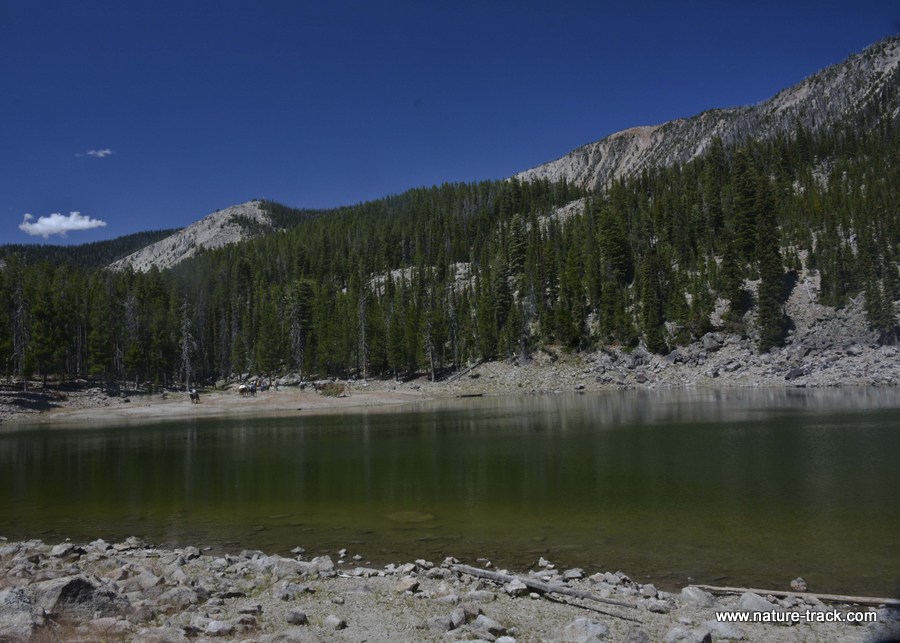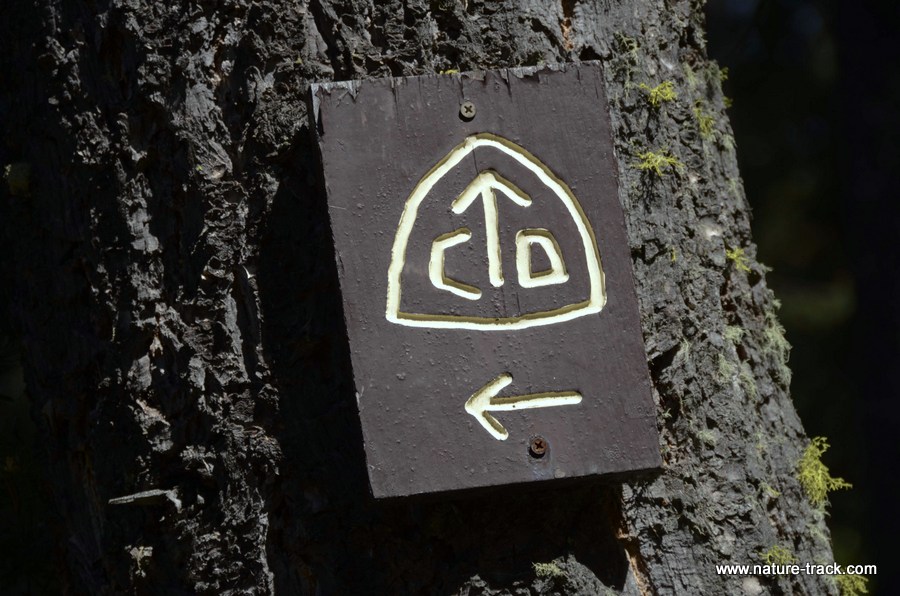Continental Divide

The Great Divide follows some of the most rugged mountains on the continent such as the ridge above Hancock Lake in the Centennial Mountains north of Kilgore, ID.

The Continental Divide Trail is marked with these distinctive markers. However, the trail isn’t always exactly on the divide proper.
Last week I crossed the Continental Divide at 65 mph in climate controlled comfort, hardly aware of the amazing thing I had just done. Such a moment deserves, if not a ceremony, at least a moment of respect.
For westerners, there is only one Continental Divide, the one often referred to as the Great Divide. It stretches from Alaska’s northwestern coast to the tip of Cape Horn, almost a canoe paddle from Antarctica. This divide rules whether water will gather and drain into the Pacific Ocean or the Gulf of Mexico/Atlantic Ocean, or the Pacific and Arctic oceans at the northern extreme. However, North America is also separated by four other hydrologic divides as well as a closed system, the Great Basin.
Lewis and Clark were likely ignorant of a great divide as they searched for the, “most direct & practicable water communication across this continent,” as directed by President Thomas Jefferson. Pioneers who followed them were under no such illusions. Knowing that the Rocky Mountains would be an insurmountable barrier in most places, they opted to take wagons through South Pass.
South Pass, Wyoming, the lowest point along the Great Divide, isn’t impressive. It doesn’t seem like much of a divide. And that was exactly the point for emigrant parties headed west between 1848 and 1868. Nearly half a million people toiled over this sunbaked and windswept pass and crossed the Great Divide without having to struggle over mountainous terrain.
It seems that the Great Divide would make a fine political boundary. For Idaho that is the case: Idaho is completely on the Pacific side. The Divide forms a 300 mile border with Montana from Lost Trail Pass north of Salmon southeast to the northeast corner of Idaho where Montana, Idaho and Wyoming all kiss. On the southern end, the Great Divide is also the long border between Chile and Argentina.
A favorite story is that Idaho and Montana were supposed to be divided entirely along the Continental Divide but surveyors goofed and followed the Bitterroot Range instead. Were that true, Idaho would include Missoula and half of Glacier National Park. However, it appears that the boundary is as Congress intended it.
For adventurists, the nationally designated Continental Divide Trail provides one of the biggest hiking challenges in the country. Its high point, Gray’s Peak, Colorado, is over 14,000 feet and the trail is 3,100 miles long. The trail often isn’t exactly on the divide, but it is still challenging.
There are places along the Great Divide that defy the assumption that a divide is just that. North Two Ocean Creek in Wyoming begins on the Pacific side of the Divide but at Two Ocean Pass, the stream splits into Atlantic Creek and Pacific Creek, heading to their respective oceans. Isa Lake on Craig Pass in Yellowstone drains both to the Atlantic and the Pacific.
I hope that the next time I cross the Great Divide it is after a long and arduous hike that leaves me a bit more appreciative of such a momentous occasion.

"WOW. What a phenomenal piece you wrote. You are amazing." Jennifer Jackson
That is embarrassing, but actually a fairly typical response to my nature essays. Since The Best of Nature is created from the very best of 16 years of these nature essays published weekly in the Idaho Falls Post Register (online readership 70,000), it is a fine read. It covers a wide variety of topics including humorous glimpses of nature, philosophy, natural history, and conservation. Readers praise the style, breadth of subject matter and my ability to communicate complex and emotional topics in a relaxed and understandable manner.
Everyone can find something to love in this book. From teenagers to octogenarians, from the coffee shop to the school room, these nature essays are widely read and enjoyed.
Some of the essays here are my personal favorites, others seemed to strike a chord with readers. Most have an important message or lesson that will resonate with you. They are written with a goal to simultaneously entertain and educate about the wonderful workings of nature. Some will make you laugh out loud and others will bring a tear to the eye and warm your heart.
Readers Write:
"You hit a home run with your article on, Big Questions in Nature. It should be required reading for everyone who has lost touch with nature...great job!" Joe Chapman
"We enjoyed your column, Bloom Where Planted. Some of the best writing yet. The Post Register is fortunate to have your weekly columns." Lou Griffin.
To read more and to order a copy, click here or get the Kindle version
Copies are also available at:
Post Register
Island Park Builders Supply (upstairs)
Barnes and Noble in Idaho Falls
Harriman State Park, Island Park
Museum of Idaho
Valley Books, Jackson Wyoming
Avocet Corner Bookstore, Bear River National Wildlife Refuge, Brigham City, Utah
Craters of the Moon National Monument Bookstore, Arco, Idaho